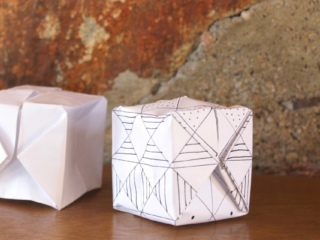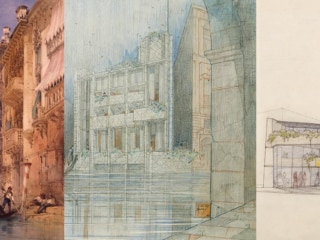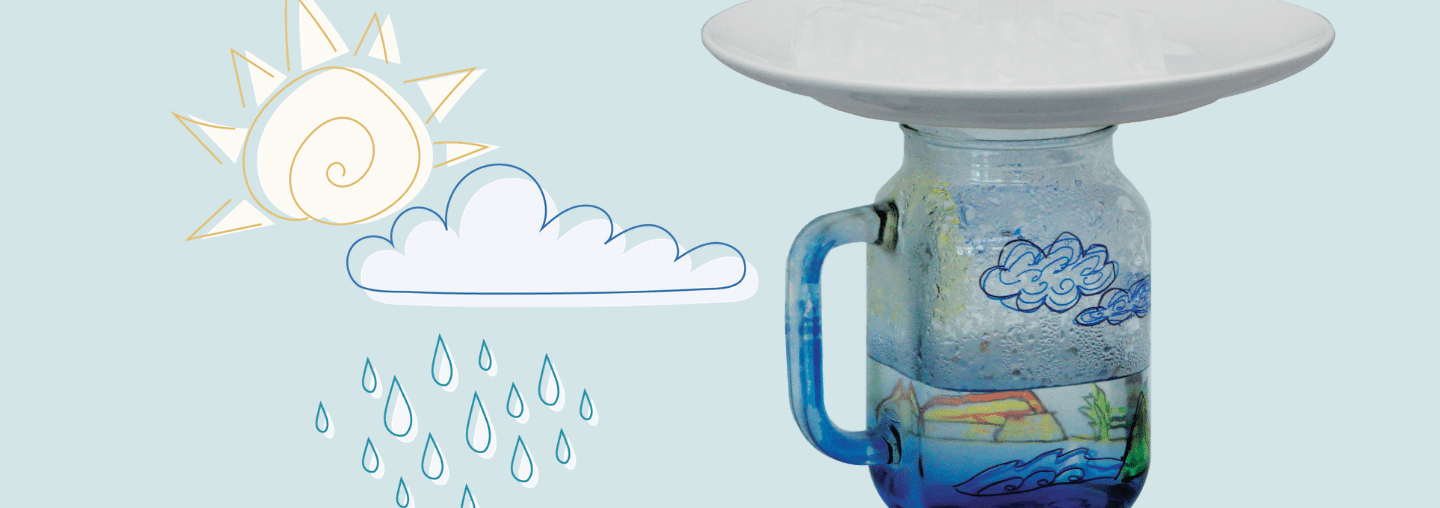
Water Cycle in a Jar
Frank Lloyd Wright Foundation | Jan 8, 2020
When building a structure by or on water, it’s important the architect has a good understanding of the element, and how it functions in its different forms. In this activity, you’ll create and witness the water cycle by using four everyday supplies.
Water has three states: solid, liquid, and gas. Water begins its journey in a liquid state, which we see as bodies of water. As the sun heats water, it becomes a gas, or water vapor, and travels up into the atmosphere in a process called evaporation. As water vapor continues its journey higher in the atmosphere it begins to cool and gathers in small drops forming what we know as clouds. This is called condensation. Once water vapor condenses, it forms droplets of water that fall to earth in the process of precipitation. We experience precipitation as rain, sleet, snow or anything in between! By using four everyday supplies, you can create and witness the water cycle right in front of your eyes!
Supplies:
- Glass jar (mason jar or something similar will work)
- Dinner plate
- Five ice cubes
- One cup boiling water
- Permanent markers
Instructions:
- Design your jar! On the bottom part of your jar draw waves or the sea. On the top half draw clouds and the sky. You can even draw a building next to the water. Get creative!
- Have an adult help you pour a cup of boiling water into the jar
- Place a plate on top of the jar
- Put five ice cubes on top of the plate
- Observe your glass as the water goes through the water cycle
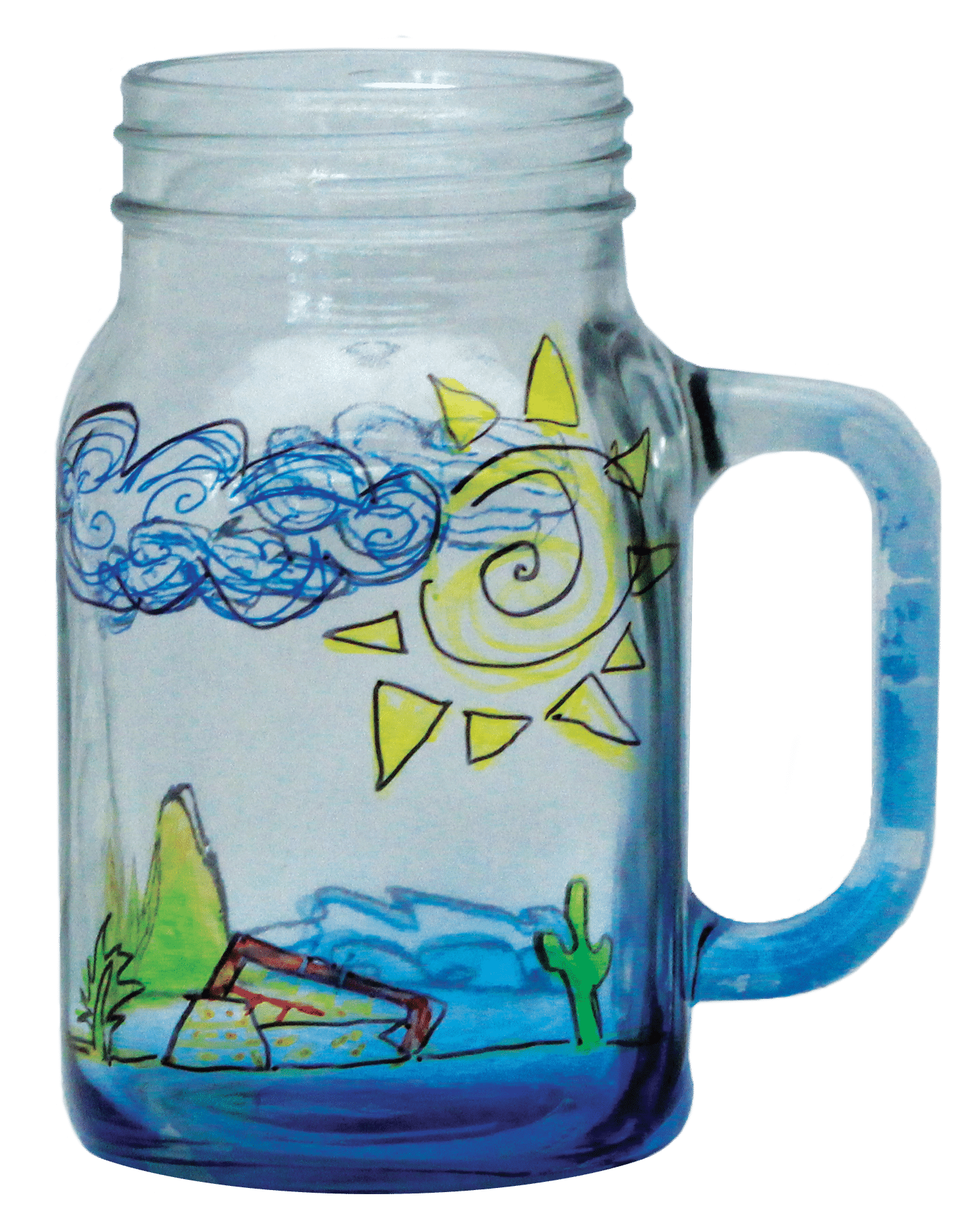
A. The hot water at the bottom of the jar represents bodies of water on earth. Just as water evaporates from lakes, oceans, and other bodies of waters, the boiling water becomes vapor.
B. As it cools in the top of the jar, where the clouds are drawn, you see the process of condensation and the jar begins to fog.
C. After a few minutes of condensing, the “rain” drips down the side of the jar back to our body of water on earth, showing precipitation.
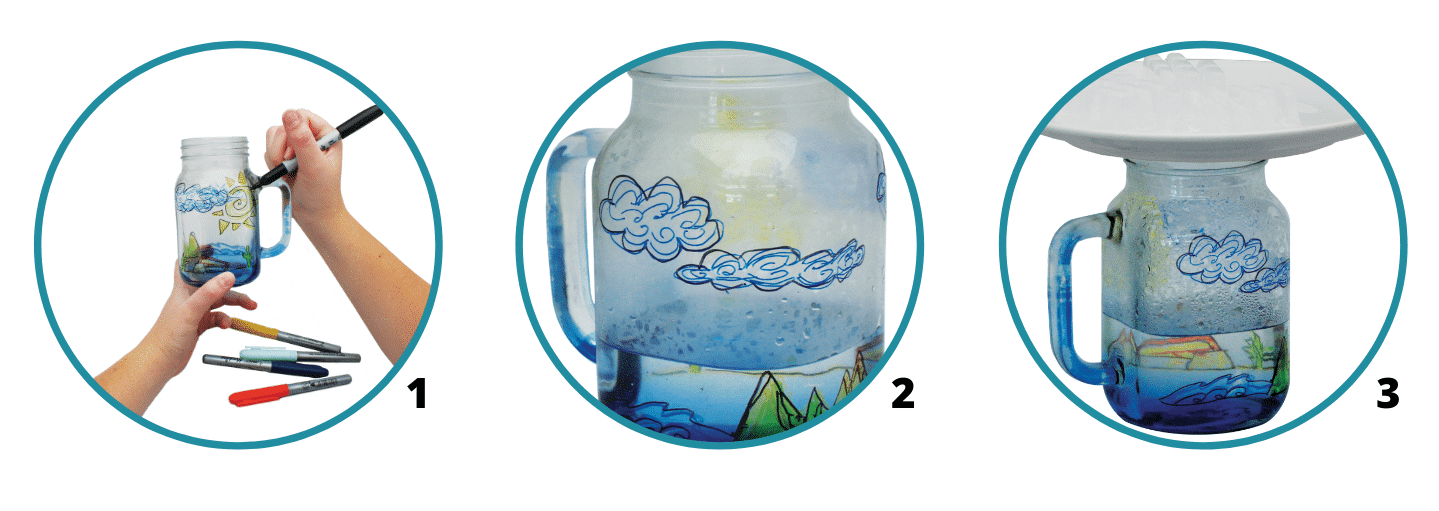 This activity originally appeared in the fall 2019 issue of the Frank Lloyd Wright Quarterly magazine, “Unbuilt Frank Lloyd Wright: The Nature of Water.”
This activity originally appeared in the fall 2019 issue of the Frank Lloyd Wright Quarterly magazine, “Unbuilt Frank Lloyd Wright: The Nature of Water.”
We use Frank Lloyd Wright’s revolutionary design concepts and buildings at Taliesin West to educate and inspire people of all ages, challenging them to understand and embrace innovation in their own lives. We offer a wide variety of fun and educational field trips, summer art & architecture camps, and more.


